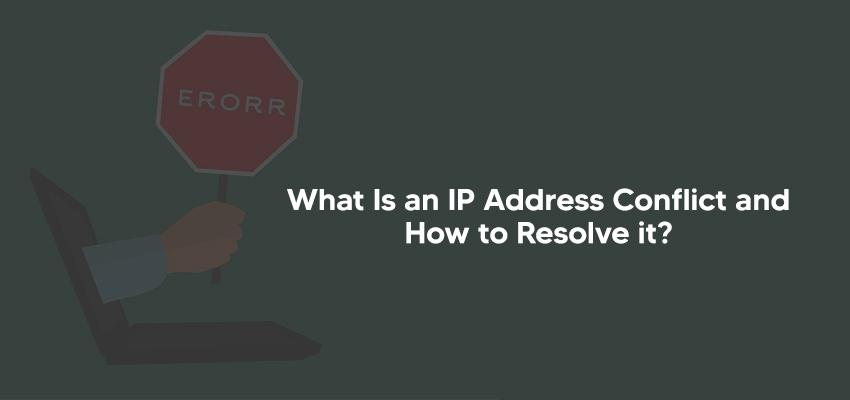
What Is an IP Address Conflict and How to Resolve it?
Posted June 20, 2020, 2:31 a.m. by Emil S.IP address conflicts can be challenging to troubleshoot. The primary reason for IP address conflicts is when two network communication endpoints receive identical IP addresses. Endpoints are mobile devices, PCs, or single network adapters. IP conflicts usually render each one or both affected endpoints inoperable.
How an IP Address Conflict Occur
Two computers can get conflicting IP addresses in many ways:
- The network administrator designates two devices on a LAN with identical static IP addresses.
- The network administrator gives a device a ‘static IP address’ in the LAN's DHCP series, while the same address is allotted by the DHCP server automatically to another device.
- The LAN DHCP server malfunctions, thus allowing a single dynamic address to be allocated to several computers automatically. That can happen when a mobile unit is set to hibernate, then reactivated later.
- An ISP assigns two clients with identical IP addresses accidentally.
Different instances of IP conflicts can happen on a network. As an example, a computer featuring multiple adapters may have a self-induced IP address conflict. Network administrators could accidentally connect two network router- or network switch ports to one another, thus creating IP conflicts.
Distinguishing IP Address Conflicts
Precise error messages or other symptoms of IP address conflicts vary contingent on the sort of device involved as well as the ‘network OS’ it operates.
On several computers with Microsoft Windows OS, an attempt to assign a ‘fixed IP address’ that is currently active on the LAN, the following error message will pop-up:
“The static IP address that was just configured is already in use on the network. Please reconfigure a different IP address.”
For newer devices (operating on Microsoft Windows) experiencing dynamic IP issues, an error message appears in the Taskbar immediately when the OS detects the conflict:
“There is an IP address conflict with another system on the network.”
In some instances, particularly with older Windows devices, the following message will appear on the screen:
“The system has detected a conflict for IP address...”
How to Resolve IP Address Conflicts
Here are suggested solutions for IP address conflicts you can try:
- If your computer has a dynamically assigned address, reconfigure its IP address to solve the IP address conflicts.
- For networks with fixed IP addresses, make sure that each ‘
localhost’ has a unique IP address. - If you suspect the ‘broadband router’ has a malfunctioning DHCP server causing IP address conflicts on the LAN, ‘upgrade the router software’ to try and resolve the issue.
Additional Information
Upgrading The Router Firmware (Software)
A router’s firmware/software is the proprietary operating system running on your unit that the manufacturer has incorporated into the device.
This firmware is sometimes updated by the router manufacturer when they detect a bug or a potential issue with the current version. That is similar to the regular updates most of the apps have from time to time. Another reason for updates is when new features are available for a specific router brand or model. A very important update usually concerns new security features for the unit.
